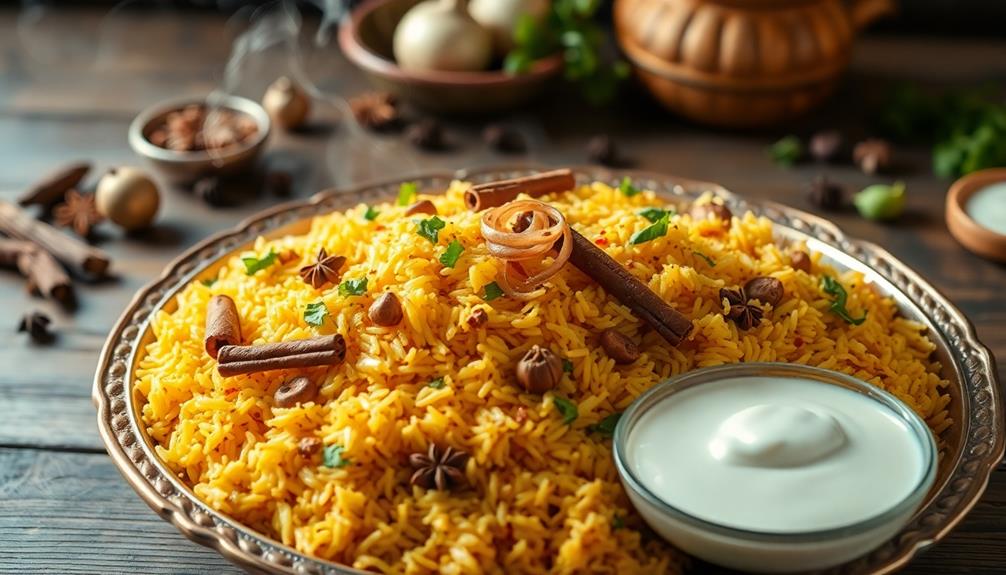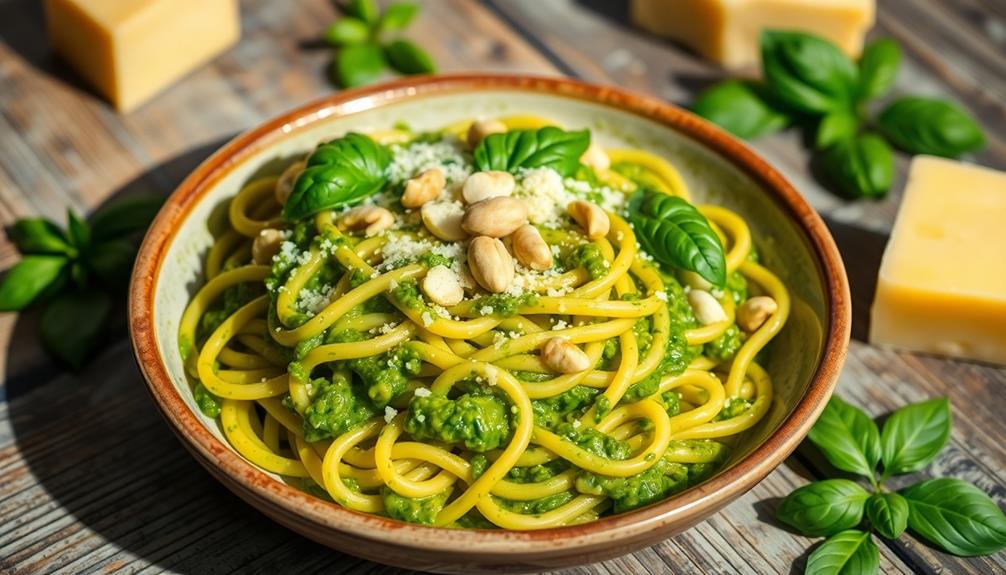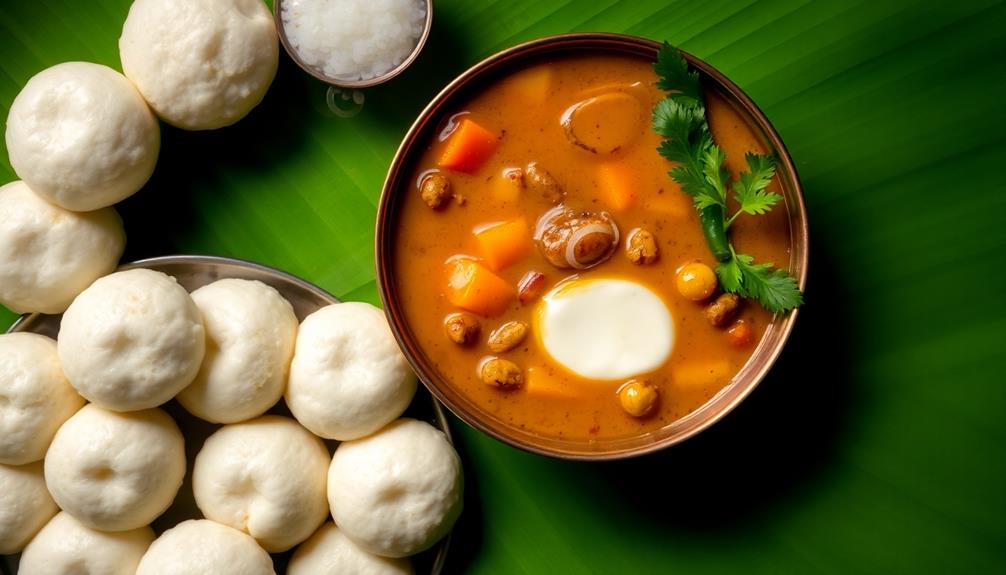Biryani is a flavorful South Asian dish that'll make your taste buds dance! It's a delightful mix of aromatic basmati rice, tender meat or veggies, and a blend of fragrant spices. You'll love how the layers of rice and meat cook together, creating a mouthwatering meal. To make biryani, you'll marinate the meat, prepare the rice, and then layer them in a pot. Don't forget to add saffron-infused milk for that signature yellow color! The key is slow cooking to let all the flavors meld perfectly. Biryani's rich history and cultural significance make it more than just a meal. Stick around to uncover the secrets of this beloved dish!
Key Takeaways
- Biryani is a flavorful South Asian dish combining aromatic rice, meat or vegetables, and a blend of spices.
- Originating from the Mughal Empire, biryani has evolved into numerous regional variations across the Indian subcontinent.
- The dish is characterized by its layered cooking method, often using basmati rice and marinated meat.
- Key ingredients typically include aromatic spices like cardamom, cinnamon, and saffron, along with yogurt for marination.
- Biryani is a popular celebratory dish that brings people together and showcases rich culinary traditions.
History
The origins of biryani can be traced back to the Mughal Empire in the Indian subcontinent. You'll find that this delicious dish has a rich history spanning centuries! As the story goes, it was created in the royal kitchens of the Mughals, who loved to indulge in elaborate feasts.
When you look into biryani's past, you'll discover that it's a perfect blend of Persian and Indian culinary traditions. The Mughals brought their love for aromatic rice dishes from Persia, and it mixed beautifully with the spices and cooking techniques of India. You can imagine how exciting it must have been when these flavors first came together!
Over time, biryani spread throughout the region, and each area added its own special touch. You'll find that there are now many different types of biryani, each with its own unique flavor and style.
From the streets of Hyderabad to the homes of Lucknow, biryani has become a beloved dish that brings people together. It's amazing to think that when you enjoy a plate of biryani, you're tasting a bit of history!
Recipe
Biryani is a fragrant and flavorful rice dish that originated in the Indian subcontinent. It combines aromatic basmati rice with tender meat or vegetables, along with a blend of spices that create a complex and satisfying flavor profile. This beloved dish has many regional variations, but the basic principles remain the same.
This recipe for chicken biryani is a classic version that can be easily prepared at home. While it may seem intimidating at first, with a bit of patience and attention to detail, you can create a restaurant-quality biryani that will impress your family and friends. The key to a great biryani lies in layering the flavors and allowing the dish to steam slowly, infusing the rice with the aromatic spices and meat juices.
- 2 cups basmati rice
- 500g boneless chicken, cut into pieces
- 1 large onion, sliced
- 2 tomatoes, chopped
- 1/4 cup plain yogurt
- 2 tbsp ginger-garlic paste
- 2 tsp garam masala
- 1 tsp turmeric powder
- 1 tsp red chili powder
- 4 green cardamom pods
- 4 cloves
- 2 bay leaves
- 1 cinnamon stick
- 4 tbsp ghee or oil
- Salt to taste
- Fresh cilantro and mint leaves for garnish
- Saffron strands soaked in warm milk (optional)
To prepare the biryani, start by marinating the chicken in yogurt, ginger-garlic paste, and spices for at least 30 minutes. In a large pot, heat ghee or oil and fry the sliced onions until golden brown. Add the marinated chicken and cook until it's nearly done.
Meanwhile, parboil the rice with whole spices until it's 70% cooked. Layer half of the rice over the chicken, followed by the remaining rice. Drizzle saffron milk over the top if using. Cover tightly and cook on low heat for about 20-25 minutes until the rice is fully cooked and fragrant.
For best results, use high-quality basmati rice and fresh spices. Allow the biryani to rest for 5-10 minutes after cooking before opening the lid. This helps the flavors meld and ensures the rice is perfectly cooked. Serve hot, garnished with fresh herbs and accompanied by raita or a simple salad for a complete meal.
Cooking Steps
Get ready to create a mouthwatering biryani with these essential cooking steps!
You'll start by marinating the meat in yogurt, then prepare a fragrant rice mixture that'll make your kitchen smell amazing.
Next, you'll layer the marinated meat and aromatic rice, add a touch of saffron-infused milk for extra flavor, and finally seal the pot for a slow-cooking process that'll bring all the delicious ingredients together.
Step 1. Marinate Meat in Yogurt

Begin by combining yogurt with your choice of meat in a large bowl. You'll want to use enough yogurt to coat the meat thoroughly.
It's time to add your spices! Sprinkle in some garam masala, turmeric, cumin, and coriander. Don't forget to add a pinch of salt and pepper to taste.
Now, it's time to get your hands dirty! Gently mix everything together, making sure each piece of meat is well-coated with the yogurt and spice mixture.
Once you've mixed it all up, cover the bowl with plastic wrap or a lid. Pop it in the refrigerator and let it marinate for at least 2 hours. If you've got the time, you can leave it overnight for even more flavor. The yogurt will help tenderize the meat while the spices infuse it with delicious taste.
When you're ready to cook, take the bowl out of the fridge and let it sit at room temperature for about 30 minutes. This will help the meat cook more evenly.
Now you're all set to move on to the next step in creating your tasty biryani!
Step 2. Prepare Fragrant Rice Mixture
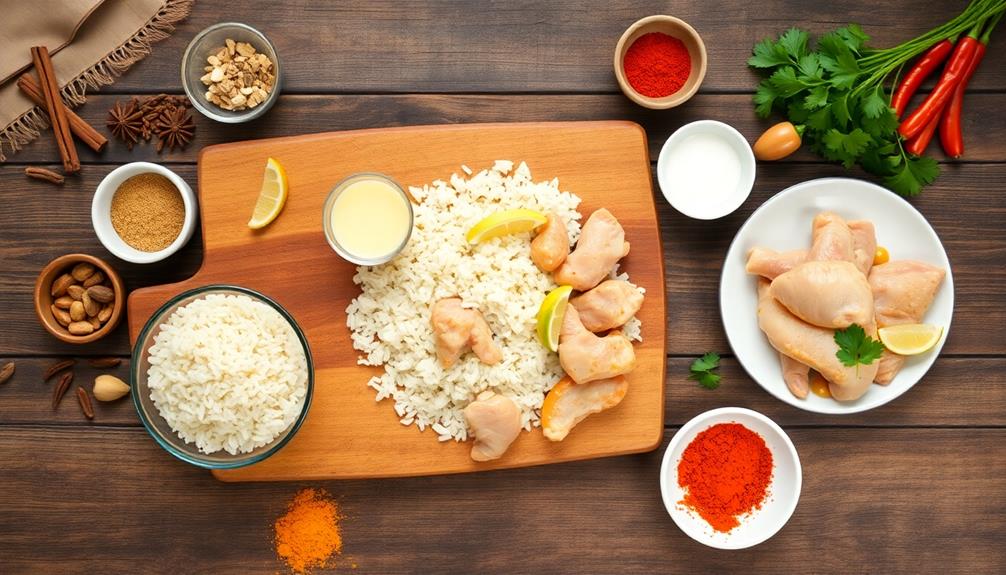
While your meat marinates, it's time to focus on the heart of any biryani: the rice. You'll want to start by rinsing your basmati rice thoroughly under cold water until it runs clear. This removes excess starch and helps keep your grains separate and fluffy.
Next, you'll create a fragrant spice mix. In a small bowl, combine whole spices like cardamom pods, cinnamon sticks, bay leaves, and cloves. These aromatics will infuse your rice with incredible flavor.
Now, heat some ghee or oil in a large pot and add your spice mix. Let it sizzle for a minute until it becomes fragrant.
Add your rinsed rice to the pot and gently stir to coat each grain with the spiced ghee. Pour in water or broth, using a ratio of 1:1.5 (rice to liquid). Don't forget to add a pinch of salt!
Bring the mixture to a boil, then reduce the heat and let it simmer. Cover the pot and cook until the rice is almost done, but still has a slight bite to it. You'll finish cooking it later when you layer your biryani.
Step 3. Layer Meat and Rice
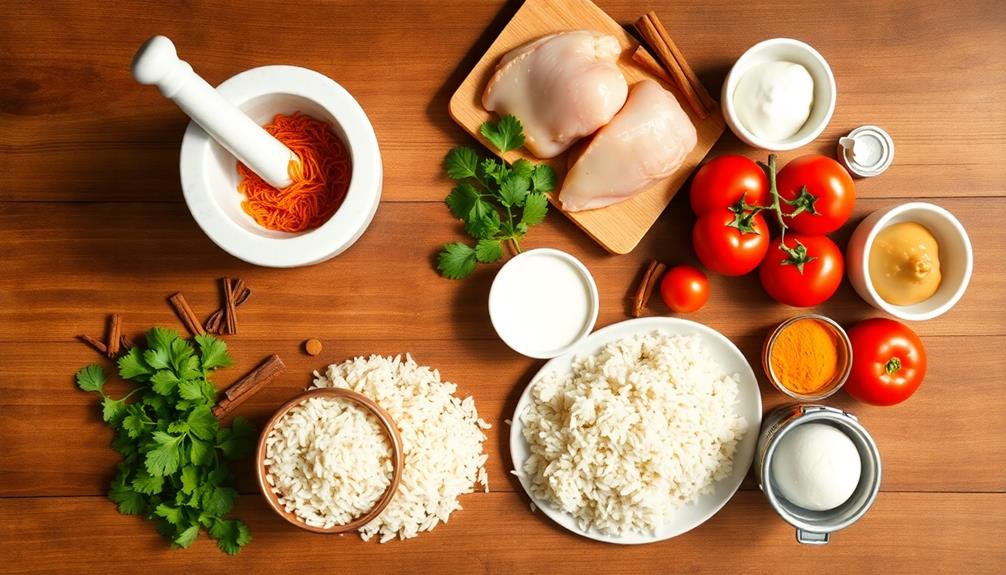
Now comes the exciting part of assembling your biryani. You'll create delicious layers that'll make your mouth water!
Start by spreading a thin layer of rice at the bottom of a large, deep pot. This'll prevent the meat from sticking. Next, add a layer of your prepared meat mixture, making sure it's evenly distributed. Don't worry if it's not perfect; it'll still taste amazing!
Now, add another layer of rice on top of the meat. Sprinkle some of your prepared saffron milk over this rice layer to give it a beautiful golden color.
Repeat these layers until you've used up all your meat and rice. The top layer should always be rice.
Once you've finished layering, pour the remaining saffron milk and any leftover ghee over the top. This'll help create a wonderful aroma and keep the rice moist.
Step 4. Add Saffron-Infused Milk
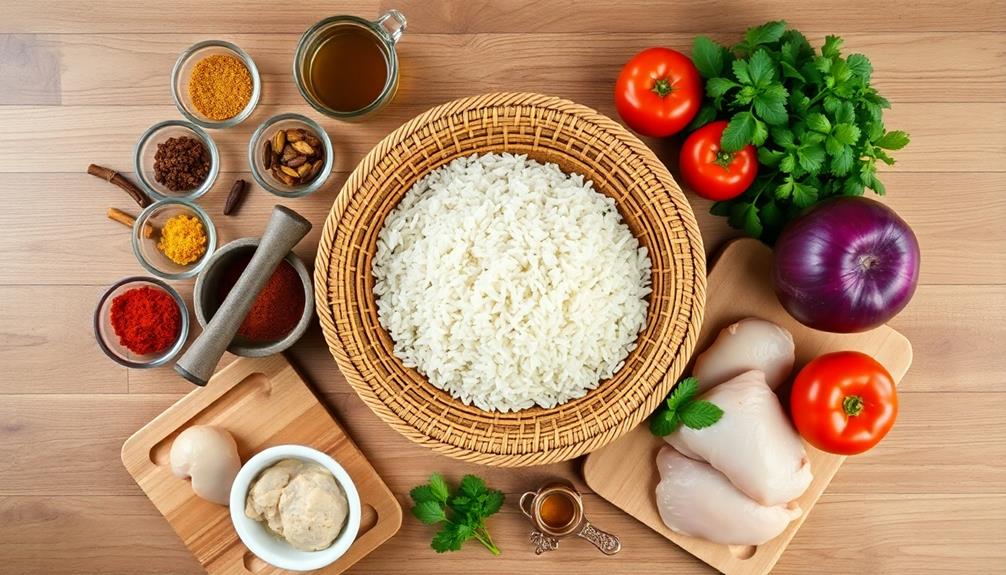
Adding saffron-infused milk is a crucial step that elevates your biryani to the next level.
It's time to create this fragrant and colorful addition to your dish. First, you'll need to warm up some milk in a small pan. Don't let it boil; just heat it until it's nice and warm.
Then, take a pinch of saffron threads and gently crush them between your fingers. Add these beautiful red strands to the warm milk and give it a good stir.
Let the saffron steep in the milk for a few minutes. You'll notice the milk slowly turning a lovely golden color. This is where the magic happens! The saffron releases its unique flavor and aroma into the milk.
Once it's ready, you'll drizzle this saffron-infused milk over the top layer of your biryani. Make sure to spread it evenly, so every bite gets a touch of that special saffron goodness.
This step not only adds a wonderful flavor but also gives your biryani those signature yellow streaks that make it look so appetizing.
Your biryani is now one step closer to perfection!
Step 5. Seal Pot and Slow Cook
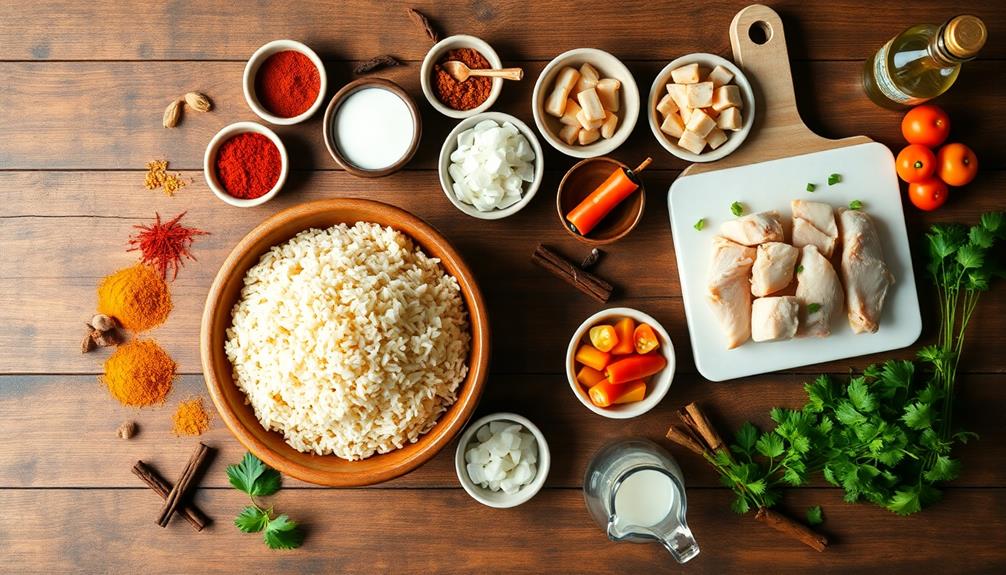
The final crucial step in preparing your biryani is sealing the pot and allowing it to slow cook. You're almost there! Now, it's time to lock in all those amazing flavors you've built up.
First, take a piece of aluminum foil and cover the top of your pot. Make sure it's snug and there aren't any gaps. Then, place the lid on top of the foil for an extra-tight seal.
Next, you'll want to put your pot on the stove over low heat. This is where the magic happens! Let it cook slowly for about 20-25 minutes. During this time, the rice will absorb all the delicious spices and aromatics.
You'll start to smell the wonderful aroma of your biryani filling your kitchen.
Don't be tempted to peek inside! Every time you lift the lid, you'll let out some of that precious steam. When the time's up, remove the pot from the heat and let it rest for 5-10 minutes. This allows the flavors to settle and the rice to finish cooking.
When you finally open the pot, you'll be greeted with a perfectly cooked, aromatic biryani that's sure to impress!
Final Thoughts
Biryani stands as a testament to the rich culinary traditions of South Asia. This aromatic and flavorful dish has captured hearts worldwide, and now you've learned how to create your own masterpiece at home.
Remember, the key to a perfect biryani lies in the layers of spices, tender meat, and fragrant rice. Don't rush the process; let the flavors meld together as they slowly cook in the sealed pot.
As you've discovered, making biryani is an art that requires patience and attention to detail. You've learned about the importance of marinating the meat, preparing the rice just right, and layering the ingredients carefully.
Now, it's your turn to experiment and make this dish your own. Try different spice combinations or add your favorite vegetables to create a unique twist on this classic recipe.
Sharing your homemade biryani with family and friends is a wonderful way to bring people together. The aroma alone will have everyone eagerly anticipating the meal.
Frequently Asked Questions
What Is the Best Rice Variety to Use for Biryani?
You'll want to use long-grain Basmati rice for the best biryani. It's aromatic, fluffy, and doesn't clump together. Its distinct flavor and texture perfectly complement the spices and meat in your dish.
Can Biryani Be Made Vegetarian?
Yes, you can definitely make vegetarian biryani! You'll replace meat with veggies like carrots, peas, and potatoes. Don't forget to add aromatic spices and herbs. It's just as flavorful and satisfying as the traditional version.
How Long Does Biryani Stay Fresh in the Refrigerator?
You can keep cooked food in the fridge for 3-4 days. It's best to consume it within this time for optimal freshness and safety. Always store it in an airtight container and reheat thoroughly before eating.
What Side Dishes Pair Well With Biryani?
You'll find that raita, a cooling yogurt-based condiment, pairs perfectly with spicy dishes. Try cucumber salad, mixed vegetable curry, or crispy papadums on the side. Don't forget pickles and chutneys to add extra flavor complexity.
Are There Any Common Variations of Biryani Across Different Regions?
You'll find numerous regional variations of this dish. In India alone, you'll encounter Hyderabadi, Lucknowi, and Kolkata styles. Each region adds its own twist, incorporating local spices, meats, and cooking techniques to create unique flavors. Popular rajma recipes from the north of India use kidney beans as the main ingredient and are typically cooked in a rich, tomato-based gravy with a blend of aromatic spices. In contrast, the southern region of India often incorporates coconut milk and curry leaves for a more creamy and fragrant flavor. Whichever style you choose, rajma is a beloved staple in Indian cuisine, and its versatility makes it a favorite dish among both locals and international food enthusiasts.
